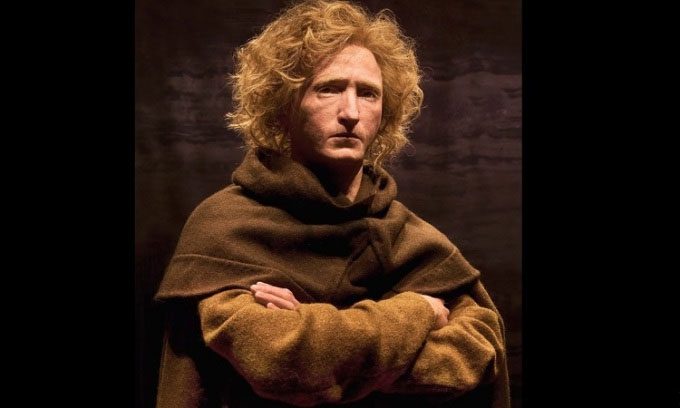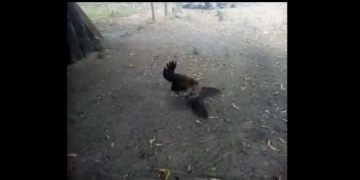Known as Bocksten Man, the body of this man was buried by his murderer at the bottom of a bog to conceal the crime, but the chemicals in the water slowed the decomposition process.
One day before the summer solstice in June 1936, 5-year-old Gulli Johanssen, along with her brother Thure, was collecting peat at the Bocksten Bog in Varberg, Sweden. The Johanssen children were shocked to discover human remains on the ground and quickly called their father, Albert. He reported it to the police, who promptly summoned local experts to the scene, including Albert Sandklef, the director of Varberg Museum, according to National Geographic.

Bocksten Man before he was killed 700 years ago. (Photo: Oscar Nilsson).
The team of experts concluded that the remains were not of a recent victim but had been there for centuries. Most of the skeleton remained buried, but some clothing and wooden stakes protruded above the surface. The body and clothing were carefully excavated and taken to the museum for preservation and study.
Referred to as Bocksten Man, the body has been remarkably preserved for 700 years in the bog. It is highly likely that he was murdered. His skull showed significant fractures, and a wooden stake was thrust through his chest, pinning the body to the bottom of the bog.
The person who pushed Bocksten Man’s body into the muddy water may have attempted to hide the crime, hoping the evidence would vanish in the deep bog. However, they were unaware that the natural chemical composition of the peat bog inhibits the decomposition of animal and human tissue. Peat is a layer of marshy soil formed from decomposed plants and moss. In the colder climates of the north, the low temperature and oxygen concentration in peat bogs create perfect conditions for preserving human bones, teeth, skin, hair, and nails.
This underwater environment also preserves clothing made from animal fibers or leather, but plant-based fabrics like linen do not fare as well. The water-rich environment not only protected Bocksten Man’s curly hair but also his clothing, providing one of the best examples of medieval European attire. Bocksten Man wore a hooded cloak, a long woven tunic cinched at the waist, knee-length woolen stockings, and leather shoes. Analysis of the remains and clothing revealed that the man held a position of status and was relatively wealthy.
In 2005, the Museum of Cultural History in Sweden hired renowned forensic artist and archaeologist Oscar Nilsson to recreate the face and appearance of the man. The first step in the process was to carefully scan Bocksten Man’s skull to create a plastic model. The plastic skull would serve as the foundation for the reconstruction. Next, Nilsson placed several markers on the skull to build the facial features. Using data on gender, age, weight, and ethnography, Nilsson estimated various characteristics in the subject’s appearance, such as facial muscle thickness, cheek fullness, and nasal height.
Nilsson then applied layers of polymer clay to replicate each type of human facial tissue. Once the reconstruction was complete, he placed a layer of silicone skin on top. Eyebrows, eyelashes, and hair were among the final features added before the statue was dressed and adorned. Nilsson’s meticulous reconstruction model is currently on display near the remains of Bocksten Man at the Museum of History in Sweden.





















































